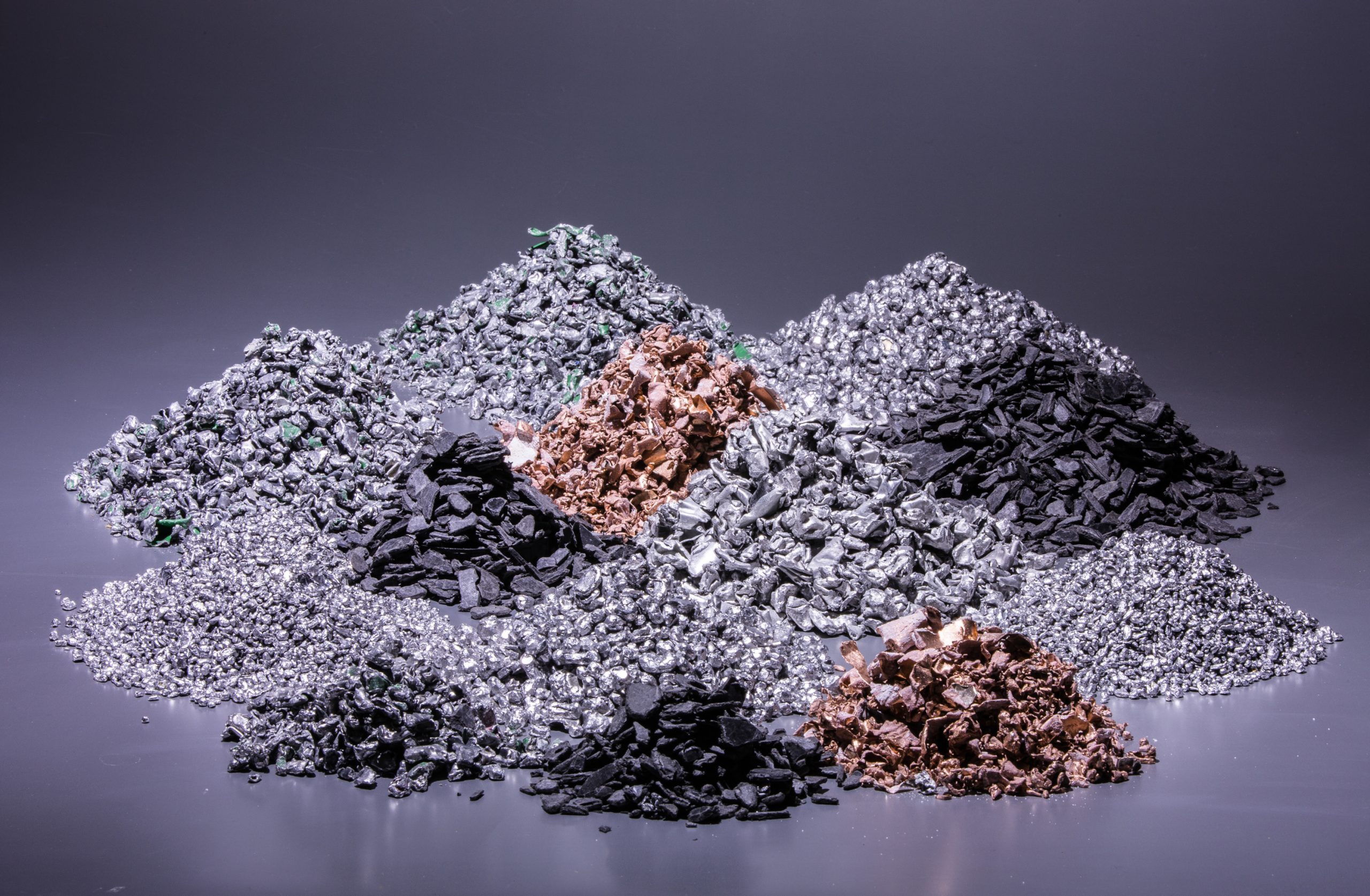At this year’s IFAT BHS-Sonthofen (Stand B4-351/450), a supplier of machines and process solutions in the field of metal-containing composites, will focus on metal recovery from metal-containing waste materials such as electrical and electronic scrap, incinerator bottom ash (IBA) and shredder residue from automotive shredder residue (ASR). A second focus topic is the efficient and safe recycling of lithium-ion batteries.
“Transforming materials into value” – economically producing the maximum value from different materials – that is the mission of BHS-Sonthofen. At its trade fair stand, the company will be using themed islands to impressively demonstrate how it is fulfilling this mission in the recycling of metal-containing residual and waste materials on the one hand and in battery recycling with in-depth process expertise on the other. A broad technology portfolio, trials in the in-house test center, plant engineering, international project management and many years of experience form the basis for innovative, efficient recycling solutions.
Theme island for metal recovery from metal-containing composites

“We see the pure recovery of valuable metals as one of the key issues in the industry,” comments Daniel Zeiler, Head of the Recycling Technology division. “In recent years, BHS-Sonthofen has continuously invested in further development in order to further improve metal recovery from a wide range of feed materials. Depending on the material, we offer an optimized process tailored to individual requirements as well as the necessary core machines from our own production.”
The most recent reference in this context is a solution implemented at the southern French company Envie. Envie in Toulouse specializes in the recycling of electrical and electronic waste (WEEE). With a completely new system with a BHS pre-shredder and a rotor shredder (type RS), the customer expanded its capacities in 2023 and significantly improved the output quality and quantity.
Complete solutions for efficient battery recycling from a single source

Battery recycling now plays a key role in the development of sustainable energy storage solutions. A few years ago, BHS-Sonthofen developed a new, safe process for the efficient recycling of lithium-ion batteries, which has since proven itself successfully in several production-scale references. The mechanical drying process in a protective atmosphere consists of three main stages: shredding, vacuum drying and sorting. Drying is supplemented by condensation for electrolyte recovery and gas purification. The three process stages have now reached such a high level of maturity that they are offered as ready-made standard modules. The process allows valuable raw materials such as lithium, nickel, cobalt and manganese concentrated in black mass to be returned to the material cycle at a rate of more than 97%. A high proportion of recyclable materials such as aluminum, copper and iron can also be recovered. Visitors can find out more about the process and the solution in the theme island.
“We are the only provider that technologically covers all key process steps in mechanical battery recycling and therefore offers the relevant process modules from a single source. Customers benefit from our bundled experience and combined process expertise from processing and classic process technology,” explains Zeiler. “For example, we use drying technologies from our Process Technology division that are otherwise used in the chemical or pharmaceutical industry.” The most recent reference is a large-scale plant for the recovery of black mass that is currently under construction at BASF in Schwarzheide. “Together with BASF, we are successfully implementing our third major project in the last two years,” says Zeiler. “This experience provides the customer with process and investment security.”
Comprehensive portfolio of machine technologies and systems
BHS-Sonthofen offers the full range of machine technology and complete systems, including separation and screening technology, for the effective processing and pre- and post-shredding of valuable waste materials. The latest product development for pre-shredding is the RAPAX, a powerful, universally applicable pre-shredder that combines design and function. As a versatile and robust machine, the RAPAX is particularly suitable for processing various metal fractions and e-scrap as well as commercial and industrial waste. In the pre-shredding of batteries, the VR rotor shear is used as a powerful twin-shaft shredder. The single-shaft shredder Universal-Shredder (NGU) is used for pre- and post-shredding a wide variety of materials that can be cut, such as non-ferrous light metals, batteries, data carriers, cables or substitute fuels. Particularly noteworthy is the further development of VR and NGU into fully inertizable and gas-tight machines – developed specifically for the safe shredding of batteries.
For the selective shredding of e-scrap or light metal scrap in particular, BHS offers the low-maintenance and robust Rotorshredder (RS ), which selectively shreds, breaks down and cleans the feed material using impact, beating and shearing forces. Metal components are optimally dissolved and piece sizes are reduced in a targeted manner. The high-performance shredder rotor impact mill (RPMX) also reliably breaks down fine fractions from pre-shredded, metal-containing material composites and removes cable sheathing and other adhering substances from metals. The metal spheroidization allows the metals to be separated by type.
BHS rounds off its trade fair presence with separating, sorting and classifying technology. The investment in the Swiss company RW Recycling World makes it possible to integrate technologies and machines from this sector into BHS processes. This offers the user significant added value in processes for recovering unmixed metal fractions.
“With IFAT, we as an Allgäu-based group of companies have the international industry meeting place virtually on our own doorstep. We are looking forward to giving visitors from all over the world an insight into the value chain with processes and technologies from BHS-Sonthofen,” concludes Zeiler.
Cover photo: Metal-containing composites (Source: BHS-Sonthofen)

